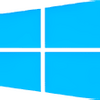Utility that checks hard drives for common and specific infections
Utility that checks hard drives for common and specific infections
Vote: (7 votes)
Program license: Free
Developer: Microsoft
Version: 5.17
Works under: Windows
Vote:
Program license
(7 votes)
Free
Developer
Version
Microsoft
5.17
Works under:
Windows
Pros
- Simple, easy-to-use interface
- Offers three scanning options for flexibility
- Does not interfere with daily computer use
- Complementary to existing antivirus programs
- Regularly updated to combat new threats
Cons
- Not a replacement for full antivirus software
- Lacks advanced customization for power users
- Can be less effective without regular updates
Enhancing System Security with Microsoft's Removal Tool
The Windows Malicious Software Removal Tool (MSRT) is a cybersecurity utility designed to fortify the defenses of a Windows operating system by detecting and eliminating prevalent malware from an infected system. This tool serves as an auxiliary layer of protection that can work alongside existing antivirus solutions to handle specific threats and security challenges that may bypass conventional antivirus programs.
Scan Options for Targeted Malware Removal
The MSRT presents users with three scanning options: Quick Scan, Full Scan, and Customized Scan. The Quick Scan swiftly checks areas of the system commonly affected by malicious software, offering a speedy method to ascertain system health. The Full Scan is more comprehensive, delving into all parts of the system, albeit at the expense of time. The Customized Scan allows for a targeted approach, giving users the autonomy to select specific files and folders for examination.
No-Frills User Interface
With a focus on simplicity and efficiency, the MSRT features an unadorned interface devoid of intricate settings or visual embellishments. Its minimalist design can be seen as a double-edged sword; while it facilitates immediate use without needing to navigate complex configurations, it also precludes user customization that may be desirable for advanced users. After completion of a scan, the tool provides a report detailing the outcomes, and further information about detected malware can be accessed online.
Performance and Usability
As a Microsoft product, the MSRT is well-integrated within the Windows environment, and the application is known for its reliability and unobtrusive presence. It does not impede system performance during scans, ensuring that users can continue with their activities relatively undisturbed. The user-friendly nature of MSRT makes it a viable option, even for those who might not be as technically inclined.
Role in the Security Ecosystem
It is imperative to highlight that MSRT is not a substitute for comprehensive antivirus software. Instead, this tool is ideally employed in specific situations such as second-opinion scans, post-infection clean-up, or checks on systems without permanent antivirus protection. Moreover, it might be most effective when deployed to inspect systems suspected of infection, where it can be a frontline response before turning to more specialized remediation tools.
Regular Updates for Continued Effectiveness
Microsoft diligently updates the MSRT on a monthly basis, typically in tandem with its Patch Tuesday updates, to ensure that the tool is equipped to deal with the latest malware threats. This consistent updating routine is crucial for the tool to retain its effectiveness against newly emerging malware variants.
Conclusion
The Windows Malicious Software Removal Tool is a sensible addition to any user's security arsenal, especially when dealing with particular threats or as a reactive measure post-detection. Its straightforward interface and focused scanning capabilities make it a helpful utility for quick inspections and malware removal operations when needed.
Pros
- Simple, easy-to-use interface
- Offers three scanning options for flexibility
- Does not interfere with daily computer use
- Complementary to existing antivirus programs
- Regularly updated to combat new threats
Cons
- Not a replacement for full antivirus software
- Lacks advanced customization for power users
- Can be less effective without regular updates




